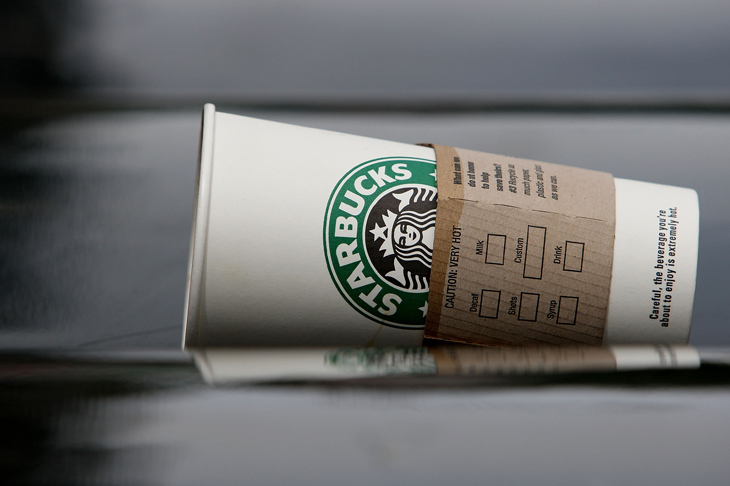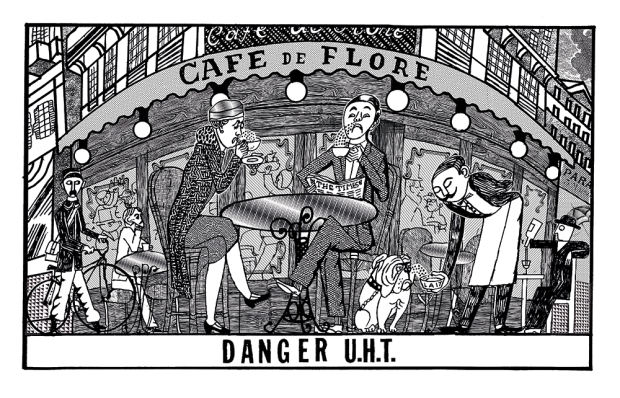I gave up coffee a couple of weeks ago. I won’t pretend it was easy. The physical withdrawal began with a blinding headache accompanied by creeping nausea. My limbs turned rubbery, and I was reminded of when Winston Churchill cruelly compared Ramsay MacDonald to a Barnum’s Circus freak dubbed ‘The Boneless Wonder’. I felt just like The Boneless Wonder, but with my head trapped in a vice. This feeling lasted for more than a week. I could have fixed it with a single, swift flat white, but I chose not to. This time, coffee and I are over.
I can’t remember exactly when I became so addicted to coffee. It crept up on me, like it did on the rest of the country. As a child, from the age of four, I drank tea, little steaming cups that punctuated all the parts of the day not spent in school. There was a whole language to tea. If you had a row with someone in the family and then later you said, ‘Do you want a cup of tea?’, it was a sign that you were sorry. If they accepted, they had forgiven you. If they said, ‘No thank you’, they were still angry. It couldn’t be that they just didn’t want it. No one ever didn’t want tea.
Coffee had no language. If someone refused coffee, it didn’t mean anything: maybe they really didn’t want it. Coffee was mainly instant, and its smell — that earthily intoxicating blast that rose up when you popped the seal on the jar — promised more than the taste delivered. I could take it or leave it. Its superior forms were for special occasions: when guests came, the good, ground stuff emerged along with the ceremonial coffee plunger.
Then, in the 1990s, coffee really began to hijack our imagination, drifting over from the US. The Friends gang hung out in coffee bars, gossiping. The women in Sex and the City rushed around Manhattan in high heels, sipping coffee from paper cups. In Britain we used to take our hot drinks sitting down, as part of a break, but these on-the-go cups suggested coffee was for people who were glamorously short of time, in permanent motion. They belonged to the new cult of busy. In work, getting a tea round in was a low-key favour, but if you really wanted to impress your colleagues, you came back with a wallet-lightening tray of branded lattes and cappuccinos. Tea was the old comforter, but coffee had the kudos. Even better, it allowed for ever more dizzying refinements of consumer choice and snobbery, as the supremacy of Starbucks, Costa, Pret and Nero began to be challenged by artisanal pop-ups. Today, the roaring coffee-shop market is still expanding — 18 years of continuous growth; 22,845 outlets — while pubs are in decline. How much more of the stuff can we swill down?
For someone like me — who in my university years was so sleepy that it provoked widespread curiosity — coffee was a godsend, like alcohol to a shy person. It had a dramatic physical and mental effect. There’s a chemical called adenosine that regulates sleep, and caffeine blocks it. When I worked as a film critic, the coffee even kept me awake through Lord of the Rings.
I started discriminating between coffee shops, making overly intense judgments about their wares. I found my preferred vendor in a Turkish café near where I lived, but after I obtained an old-fashioned stovetop espresso maker, I saw the greater appeal of getting high on my own supply: a big coffee mid-morning, a smaller one late morning, and possibly — if required — a sneaky skinny latte in the afternoon. When I went on holiday with the family, I packed the espresso maker and a packet of Lavazza Rossa, sizing up the local coffee shops like a crack addict checking out dealers.
For a long while, it was wonderful. I hadn’t fallen asleep in the daytime in years. In fact I often wasn’t even tired at night. If you like simply ingesting information, there’s so much extra time to do it when everyone’s asleep, although one night — when I found myself googling dog breeds and their different personalities at 2 a.m. — I did pause briefly to wonder if something had gone awry. I don’t even have a dog. I don’t even want one.
Then, slowly, coffee turned nasty. If I couldn’t get to the brew by mid-morning, for whatever reason, I had a thumping headache. On days when I drank too much, if combined with sleeplessness and travel, I would get a migraine that knocked me out for a day. Coffee had slowly changed from an exciting, extrovert friend to a raging bully, hammering on the front door with a steel bar if I didn’t meet him bang on time. And also, with all the lattes, I was drinking a lot of milk. I saw my future stretching ahead, with me portly, irritable and permanently wired.
Don’t worry — I’m not trying to put you off. You might be able to metabolise a double espresso like mother’s milk, and good luck to you. But I do wonder how many people across Britain are now being silently held hostage by their angry coffee habit. I mentioned this to another mother in the school playground as she sipped her cappuccino. She said that her husband had experienced the headache, but now carried an emergency solution: an Italian chocolate called ‘pocket coffee’ with a single espresso shot inside.
I drink tea, of course. I never stopped. And yes, I know tea contains caffeine too — a lesser amount — but it’s never given me any trouble. The headaches have ebbed, but life feels strangely flat. I drink decaf coffee sometimes, for the taste, but decaf is like a dog with no teeth: you know it can’t harm you, but it’s depressing all the same. The adenosine is up and running again. I’m very sleepy. And when I wake up and don’t smell the coffee, I still miss my bad friend.
Got something to add? Join the discussion and comment below.
Get 10 issues for just $10
Subscribe to The Spectator Australia today for the next 10 magazine issues, plus full online access, for just $10.
You might disagree with half of it, but you’ll enjoy reading all of it. Try your first month for free, then just $2 a week for the remainder of your first year.















Comments
Don't miss out
Join the conversation with other Spectator Australia readers. Subscribe to leave a comment.
SUBSCRIBEAlready a subscriber? Log in